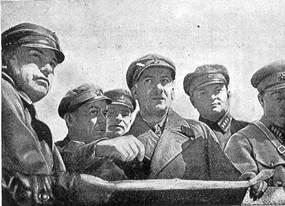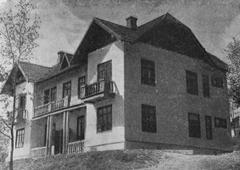
Moscow Canal Visiting Hours, Tickets, and Historical Significance Guide
Date: 14/06/2025
Introduction
The Moscow Canal, historically known as the Moskva–Volga Canal, is a monumental achievement of Soviet engineering that fundamentally shaped the city of Moscow. Spanning approximately 128 kilometers, the canal connects the Moskva River with the Volga River, giving Moscow direct access to five seas: the White, Baltic, Caspian, Azov, and Black Seas. This strategic waterway not only transformed Moscow into a “port of five seas,” bolstering transportation and trade, but also became the city’s primary source of potable water, supplying up to 60% of its needs. Built between 1932 and 1937, the canal’s construction involved a massive workforce, including over 200,000 Gulag prisoners, whose contributions and suffering are an inseparable part of its legacy (Wikipedia; Britannica; ICOMOS).
Today, the Moscow Canal is not just an infrastructural asset—it is a cultural and recreational hub, featuring remarkable Stalinist and Soviet Art Deco architecture, including the iconic Northern River Terminal, monumental locks, bridges, and commemorative sculptures. It is integrated into Moscow’s urban green spaces and smart city initiatives, making it a vital part of the city’s sustainability and recreation. Visitors can experience the canal’s legacy through guided tours, boat cruises, and scenic embankments. This guide provides essential information on visiting hours, ticketing, accessibility, nearby attractions, and practical tips for making the most of your visit.
Historical Overview
Conception and Strategic Importance
The idea for the Moscow Canal arose in response to Moscow’s chronic water shortages and the need for improved transport links in the early 20th century. Connecting the Moskva and Volga Rivers integrated Moscow into Russia’s vast inland waterway network and provided access to five major seas, greatly enhancing the city’s economic and logistical reach (Wikipedia; Wonders of World Engineering).
Construction and Human Cost
Construction commenced in 1932 and was completed in 1937—a rapid timeline for such a vast undertaking. The project required the excavation of over 201 million cubic yards of earth and the use of more than 4 million cubic yards of concrete, ranking it among the world’s largest earthworks after the Panama Canal (Britannica; Springer Reference). The canal’s construction was marked by the extensive use of forced labor from the Gulag system, resulting in significant human suffering and loss—a solemn aspect commemorated by memorials along the canal (ICOMOS).
Architectural Features and Engineering Innovations
Lock System and Hydraulic Engineering
The canal features a sophisticated system of 11 locks designed to manage the 38-meter elevation difference between the Volga and Moskva rivers. These locks, constructed from reinforced concrete, are adorned with Soviet-era decorative elements and can accommodate large vessels, ensuring year-round navigability (ICOMOS).
Bridges and Supporting Infrastructure
Robust road and railway bridges span the canal, some equipped with movable sections to allow the passage of larger vessels. The bridges and supporting structures exemplify the engineering prowess of the era.
Water Supply and Urban Impact
The canal’s reservoirs—including Khimki, Iksha, and Pestovo—are critical for Moscow’s water supply and serve as recreational areas. The canal’s role in urban resilience and sustainability continues through its integration with smart city and green infrastructure projects (Webuild Value).
Monumental and Decorative Elements
Stalinist and Soviet Art Deco Architecture
The Northern River Terminal, often called the “River Palace,” is a prime example of Stalinist neoclassical architecture, noted for its grand columns, statues, and Soviet symbolism. The terminal’s restoration has revived its historical grandeur (Express to Russia).
Sculptures and Memorials
Throughout the canal, visitors will encounter statues commemorating Soviet achievements and the laborers who built the canal, including the prominent Lenin statue at the canal’s entrance.
Visiting the Moscow Canal
Visiting Hours
- Canal Parks and Promenades: Generally open daily from dawn to dusk.
- Northern River Terminal: Typically open from 10:00 AM to 8:00 PM, with hours varying seasonally.
Tickets
- Public Areas: Free access to canal embankments, parks, and promenades.
- River Cruises: Tickets required, with prices ranging from 800 to 1500 RUB for short cruises, and higher for longer journeys. Tickets can be purchased online, at the Northern River Terminal, or via authorized tour operators. Advance booking is recommended during peak season (Rehlat).
Guided Tours
Guided walking tours and themed river cruises are available, offering in-depth commentary on the canal’s history and engineering. Special events and seasonal tours are popular during the summer months.
Accessibility
- Wheelchair Access: The Northern River Terminal and major promenade areas are equipped with ramps and accessible restrooms. Some historic canal structures may have limited accessibility.
- Facilities: Restrooms, cafes, souvenir shops, and information desks are available at major access points.
Getting There
- Metro: The Northern River Terminal is best accessed via Rechnoy Vokzal Metro Station (green line).
- Bus: Several city bus lines connect to canal access points.
- Parking: Available near the terminal for those arriving by car.
Nearby Attractions and Activities
- Museum of the Moscow Canal: Explore exhibits on the canal’s history, construction, and significance.
- Khimki Reservoir Park: Ideal for picnics, photography, and relaxation.
- Dubna Town: Located near the canal’s northern end, featuring cultural sites and local dining.
- Beach Areas: Designated swimming zones with amenities, especially in Strogino and Khovrino districts.
- Cycling and Walking Paths: Well-maintained embankments allow for scenic walks and bike rides (Owl Over The World).
- Festivals and Events: The canal hosts regattas, music festivals, and water-based sporting events, particularly in summer.
Visitor Experience and Practical Tips
- Best Time to Visit: Late spring to early autumn (May–September) for optimal weather and full access to cruises and outdoor activities (Travellers Worldwide).
- Dress Comfortably: Wear suitable shoes for walking or cycling and bring sun protection during summer.
- Plan Ahead: Book cruises and guided tours in advance, especially during weekends and holidays.
- Language: While English is spoken at major sites, basic Russian phrases or translation apps can be helpful (Owl Over The World).
- Photography: Sunrise and sunset offer the best lighting for photos of the canal and its architecture.
- Safety: The area is generally safe, but standard precautions should be taken with personal belongings.
Heritage and Conservation
While the canal is celebrated for its engineering and architectural accomplishments, public access to many structures is restricted due to operational and security reasons. Only the Lenin statue and the Northern River Terminal are officially protected as national monuments. Advocates are pushing for expanded conservation efforts and potential UNESCO World Heritage status, but urban development continues to pose challenges (ICOMOS).
Integration with Moscow’s Smart City Vision
The Moscow Canal plays a crucial role in the city’s Smart City 2030 strategy by supporting digital monitoring, green infrastructure, and sustainable development. Its ongoing modernization ensures that it remains vital to Moscow’s future (Webuild Value).
Frequently Asked Questions (FAQ)
Q: What are the Moscow Canal’s visiting hours?
A: Canal parks and promenades are usually open from dawn to dusk. The Northern River Terminal generally operates from 10:00 AM to 8:00 PM, with possible seasonal adjustments.
Q: How do I purchase tickets for canal cruises?
A: Tickets are available online, at the Northern River Terminal, or through authorized tour operators. Booking ahead is recommended.
Q: Is the Moscow Canal accessible for visitors with disabilities?
A: Major areas, including the terminal and promenades, are accessible, but some historic sites may have limited access.
Q: Are there guided tours?
A: Yes, both walking tours and guided river cruises are available.
Q: When is the best time to visit?
A: The most enjoyable period is late spring to early autumn (May–September).
Summary and Final Tips
The Moscow Canal is a unique blend of history, engineering, and recreation. From its crucial role in connecting Moscow to five seas and supplying drinking water, to its Stalinist architecture and vibrant parks, the canal offers a multifaceted and accessible experience. To make the most of your visit:
- Check current visiting hours and ticket availability.
- Book guided tours or river cruises in advance.
- Visit during late spring to early autumn for the best experience.
- Download the Audiala app for maps, bookings, and insider tips.
The Moscow Canal stands as a living monument and vibrant part of Moscow’s heritage—well worth your exploration.
Sources
- Moscow Canal - Wikipedia
- Moscow Canal - Britannica
- Moscow Canal: Hidden Heritage Under Threat - ICOMOS
- Russia’s Infrastructure Overhaul Explained - The Moscow Times
- Moscow Smart City Initiatives - Webuild Value
- Moscow Canal Engineering Feat - Wonders of World Engineering
- Moscow Canal Visitor Guide - Express to Russia
- Moscow Travel Tips - Owl Over The World
- Best Time to Visit Moscow - Travellers Worldwide
- Moscow Guide - Rehlat





















































































































































































































































































